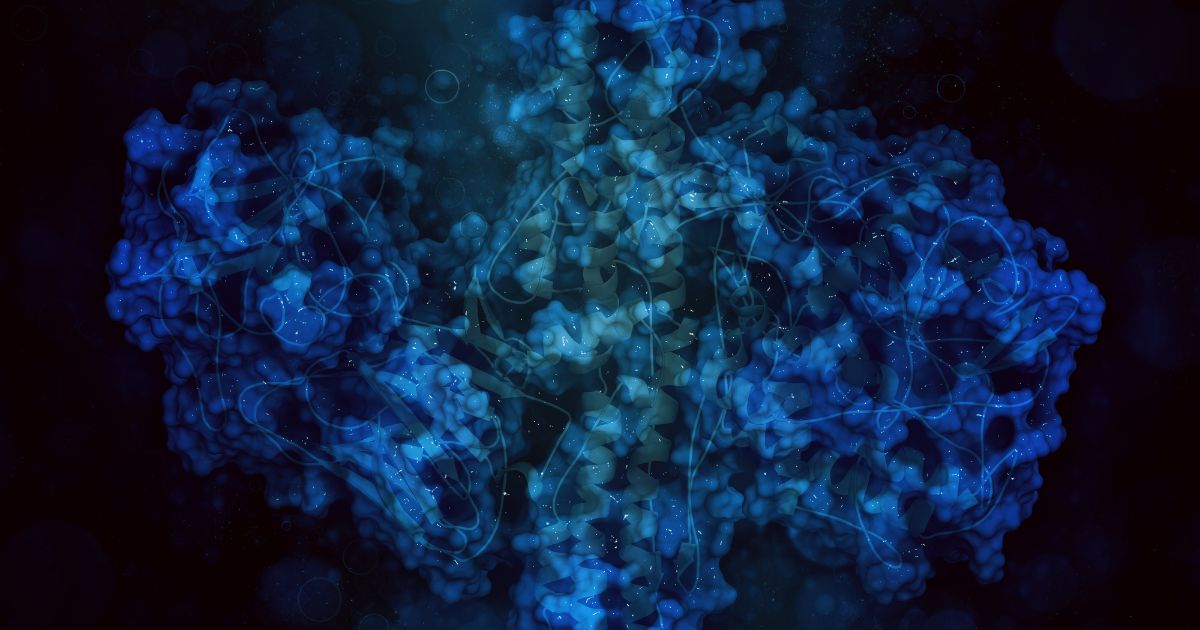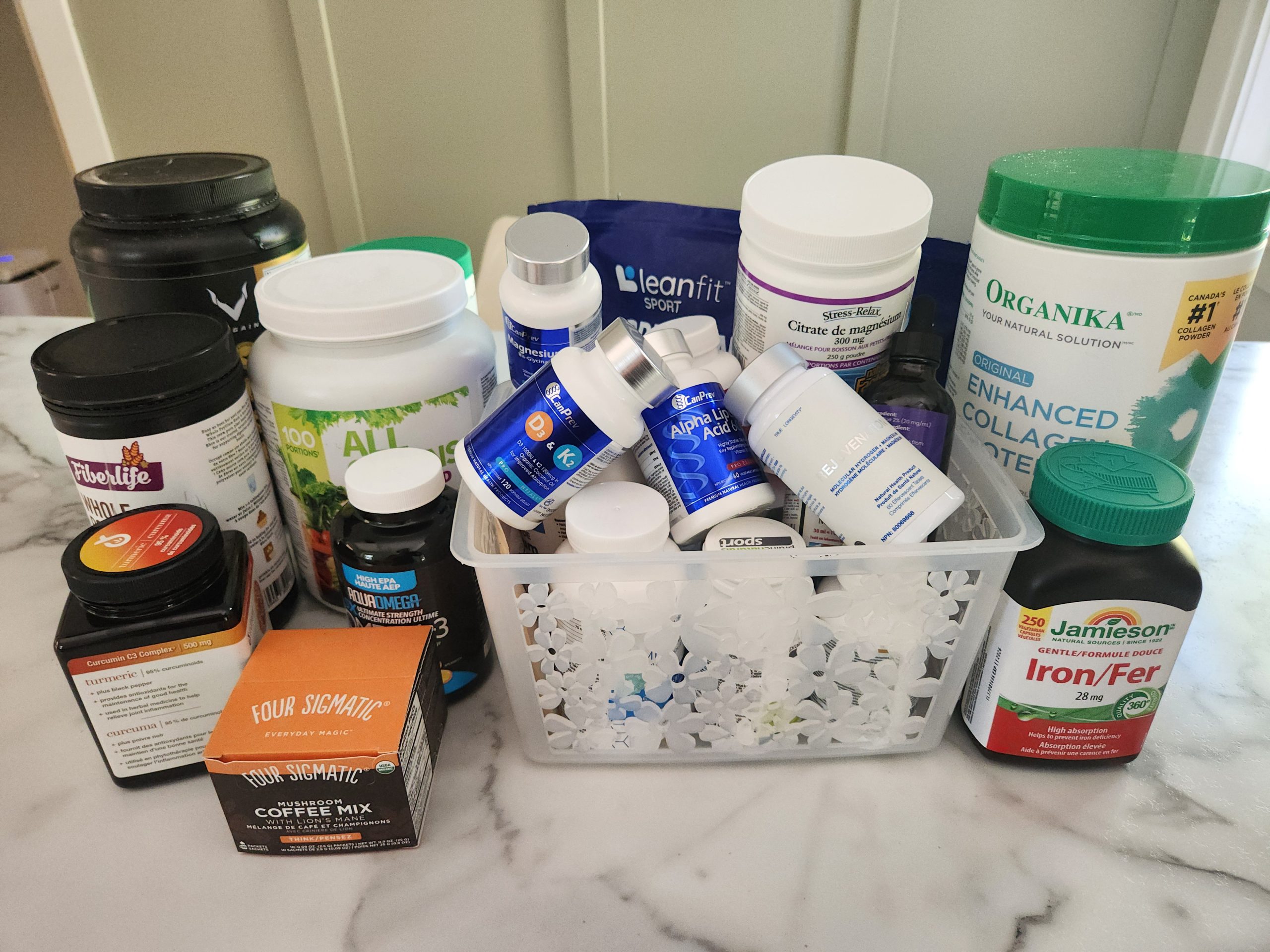I want to talk about something that usually lives completely out of sight and out of mind, yet is central to how we feel, think, move, and age: mitochondria. These tiny organelles inside nearly every cell of the body are often called the powerhouses of the cell, and for good reason. But their role goes far beyond generating ATP. They are metabolic command centers, signaling hubs, and sensitive responders to lifestyle, environment, and time. Over years of looking at metabolic health and mental wellbeing, I have come to view mitochondrial health as a major lever for improving energy, resilience, and long term function.
In this article I will explain what mitochondria do, why mitochondrial function declines with age, and crucially, what you can do about it. I will give practical, evidence based steps you can take starting today. I will also walk through specific micronutrients and supplements that show promise for mitochondrial support, with commonly used dosages, delivery forms, and safety caveats. My goal is to give you a clear, practical playbook to evaluate whether your daily micronutrient routine is truly supporting mitochondrial health.
Table of Contents
- Why mitochondria matter more than you think
- What happens to mitochondria as we age
- How mitochondria affect metabolism and brain health
- Core pillars for protecting mitochondria
- Targeted micronutrients and supplements for mitochondrial support
- Putting it together a practical daily protocol
- Safety and interactions
- Environmental toxins and mitochondria
- Monitoring mitochondrial health
- Practical lifestyle plan week 1 to 12
- FAQs
- How I approach mitochondrial support in my practice
- Final thoughts
Why mitochondria matter more than you think
Mitochondria transform the food and oxygen you bring in into ATP, adenosine triphosphate, the chemical energy that powers muscle contraction, ion pumps that maintain nerve signaling, and a thousand other cellular processes. But mitochondria do not simply produce energy. They sense nutrient status, manage calcium levels, produce signaling molecules, and participate in programmed cell death when cells are damaged. In short, they are integrators of cellular and organismal state.
When mitochondria are efficient, cells perform optimally. When they are dysfunctional, a cascade of problems follows. Poor mitochondrial performance can manifest as persistent fatigue, reduced exercise tolerance, cognitive fog, mood instability, metabolic dysfunction such as insulin resistance, and increased vulnerability to age related diseases like heart disease and neurodegeneration. Because the brain is extremely energy dependent, mitochondrial compromise can hit cognition and mental health more quickly than some other systems.

What happens to mitochondria as we age
Aging is associated with a decline in mitochondrial function for several reasons. Mitochondrial DNA accumulates mutations over time. Reactive oxygen species, a byproduct of respiration, can damage mitochondrial proteins and DNA. Mitochondrial biogenesis the process by which new mitochondria are formed becomes less efficient. Mitophagy the selective recycling of damaged mitochondria can become impaired. All of these changes shift the balance toward fewer, less efficient mitochondria in cells that require a lot of energy, like muscle and brain tissue.
Functionally, this translates into lower peak energy, slower recovery, reduced muscle strength, and a higher risk of metabolic syndrome, cognitive decline, and other age linked disorders. Importantly, many of the processes that weaken mitochondria are modifiable. That gives us an enormous opportunity to slow or partially reverse declines by changing lifestyle and nutritional inputs.
How mitochondria affect metabolism and brain health
Mitochondria are central to how the body handles carbohydrates and fats. When mitochondria efficiently oxidize glucose and fatty acids, blood sugar peaks are blunted and insulin signaling remains effective. When mitochondrial function is impaired, conversion of sugar to usable energy falters. That leaves excess glucose in the bloodstream, driving higher insulin levels and chronic inflammation. Over time, insulin resistance can develop and the risk of type 2 diabetes and cardiovascular disease rises.
For the brain, the consequences can be even more pronounced. Neurons have huge energy demands. Impaired mitochondrial ATP production disrupts synaptic transmission, compromises calcium regulation, and increases oxidative stress. Those changes impair memory, focus, and executive function and increase vulnerability to neurodegenerative processes. In psychiatric conditions, emerging research links mitochondrial dysfunction with mood disorders and cognitive disturbances.

Core pillars for protecting mitochondria
I distill mitochondrial support into several overlapping pillars. Think of these as a framework you can use to examine your current routines and decide what to prioritize.
- Regular physical activity that stimulates mitochondrial biogenesis
- A nutrient dense diet limited in sugars and ultra processed foods
- Sleep and circadian rhythm alignment
- Stress reduction and emotional resilience
- A targeted micronutrient and supplement strategy
- Minimizing environmental toxins and exposures
Exercise and mitochondrial biogenesis
Exercise is the single most powerful lifestyle stimulus for creating and maintaining healthy mitochondria. Both aerobic conditioning and resistance training promote mitochondrial biogenesis through activation of pathways such as PGC 1 alpha, a master regulator of mitochondrial formation. The good news is that benefit is dose flexible. Even modest daily activity improves mitochondrial function. Greater gains are often seen with consistent cardiovascular exercise and strength training.
If you want specifics I recommend a balanced approach. For cardiovascular benefit aim for 150 to 300 minutes per week of moderate intensity activity, or 75 to 150 minutes of vigorous intensity, spread across most days of the week. High intensity interval training, performed two to three times per week, can produce strong mitochondrial adaptations in shorter time. For strength aim for two to three sessions per week that work major muscle groups, using progressive overload to build muscle mass that itself supports metabolic health.
Dietary patterns that support mitochondrial health
I do not believe there is a single magic food. Instead, there are dietary patterns that reliably reduce factors that harm mitochondria and supply substrates and cofactors needed for healthy function. The most important dietary rule for mitochondria is to minimize refined sugars and ultra processed carbohydrates. These drive metabolic stress, inflammation, and mitochondrial overload.
Practical dietary priorities I follow and recommend include:
- Prioritize whole foods: vegetables, fruits, high quality proteins, healthy fats, nuts, and seeds
- Choose fatty fish such as salmon, sardines, and mackerel several times per week for omega 3 fatty acids
- Include sources of healthy monounsaturated fat such as avocado and olive oil
- Favor complex whole carbohydrates and fiber rich foods rather than refined grains and sugars
- Aim for adequate protein each day to support muscle maintenance and repair especially as you age
Beyond patterns, certain food categories provide cofactors that mitochondria need. Antioxidant rich fruits and vegetables help blunt oxidative damage. Dietary B vitamins are essential for the biochemical pathways that turn food into ATP. Dietary magnesium is a cofactor for numerous enzymatic steps in energy production. If your diet is limited, supplementing these nutrients becomes more important.
Sleep, circadian rhythms, and stress management
Mitochondria function within the context of your daily rhythms. Sleep deprivation, night shift work, and circadian disruption all impair mitochondrial performance. Poor sleep increases oxidative stress, reduces mitochondrial biogenesis, and worsens insulin sensitivity. Regular, restorative sleep is therefore a non negotiable piece of mitochondrial care. To understand just how deeply restorative sleep influences mitochondrial performance, check out why sleep may just be the ultimate superpower.
Stress matters too. Chronic psychological stress elevates cortisol and systemic inflammation, both of which negatively affect mitochondrial function. Practices that reduce stress such as mindfulness, meditation, social connection, and psychotherapy help not only psychological wellbeing but also mitochondrial resilience. Interestingly, mitochondria themselves respond to social and psychological signals through complex signaling, so nurturing relationships and a positive outlook can have cellular level consequences.
Targeted micronutrients and supplements for mitochondrial support

Now to the supplements. I will outline the commonly used nutrients with a rationale and typical dosages that I consider reasonable starting points for many adults. I am naming commonly used dose ranges that appear in the literature or are widely used clinically. However I always emphasize safety. Supplements are bioactive. They interact with medications and with individual physiology. Before starting any new supplement regimen, discuss it with your clinician, especially if you are pregnant, nursing, on medications, or have chronic medical conditions.
One more note. Supplements are not magic bullets. If your diet is poor, sedentary habits prevail, sleep is fractured, and environmental exposures are high, you cannot expect supplements to fully compensate. Think of supplements as targeted support that magnifies the benefits of foundational lifestyle practices.
If you’re looking for a convenient, high-quality source of core mitochondrial nutrients like Magnesium, Vitamin D3 + K2, Omega-3s, and Hydrogen tablets, explore the Core 4 Supplements, which integrates these essentials into a complete daily foundation.
Coenzyme Q10 ubiquinol or ubiquinone 100 to 300 mg per day
Why it helps
CoQ10 is a key component of the electron transport chain in mitochondria and functions as an antioxidant. Levels decline with age and with certain medications such as statins. Supplementing CoQ10 supports ATP production and reduces oxidative stress in mitochondria.
Forms and dosing
- Ubiquinol is the reduced, more bioavailable form and is often preferred for older adults or those with absorption issues
- Common doses range from 100 to 300 mg per day. For people on statin therapy I often start at 200 mg per day
- Divide doses if using higher amounts or take once daily with a meal containing fat to enhance absorption
Magnesium 200 to 400 mg elemental per day
Why it helps
Magnesium is essential for ATP stabilization and many enzymatic reactions within mitochondria. Chronic suboptimal magnesium status impairs energy metabolism and increases the risk of arrhythmias and muscle cramps.
Forms and dosing
- Magnesium glycinate or magnesium malate are gentle on the gut and commonly used for mitochondrial support
- Typical ranges are 200 to 400 mg of elemental magnesium daily. If you use magnesium oxide expect lower absorption and more potential for loose stools
- Split dosing can improve tolerance
BUY NOW: CanPrev Magnesium Bis-Glycinate
B vitamin complex covering B1 B2 B3 B5 B6 B12 folate
Why it helps
B vitamins act as essential cofactors in energy metabolism. They support glycolysis, the Krebs cycle, and the electron transport chain. Deficiencies can dramatically impair energy production and cognitive function.
Forms and dosing
- I favor a balanced B complex that provides at minimum effective therapeutic levels: for example B1 thiamine 50 to 100 mg riboflavin B2 10 to 50 mg niacin B3 20 to 100 mg pantothenic acid B5 50 to 200 mg B6 pyridoxine 10 to 50 mg and methylcobalamin B12 500 to 2000 mcg plus 400 to 1000 mcg folate as methylfolate or folinic acid
- These doses are higher than RDAs and are often used in clinical settings for metabolic support. If you have kidney issues or are on certain medications discuss higher B dosing with your clinician
BUY NOW:
Omega 3 fatty acids EPA plus DHA 1000 to 3000 mg per day
Why it helps
Omega 3 fatty acids reduce inflammation, support mitochondrial membrane fluidity, and have benefits for brain structure and function. They also modulate signaling pathways that can improve mitochondrial resilience.
Forms and dosing
- A combined EPA plus DHA dose of 1000 to 3000 mg per day is commonly used for general brain and metabolic support
- Higher doses may be appropriate for specific inflammatory conditions under clinician supervision
- Look for third party testing for purity and low mercury levels
BUY NOW: AquaOmega Omega 3
Nicotinamide riboside NR or nicotinamide mononucleotide NMN 250 to 500 mg per day
Why it helps
NR and NMN are precursors to NAD plus a crucial coenzyme involved in redox reactions and mitochondrial metabolism. NAD levels decline with age and replenishing precursors can support mitochondrial function, sirtuin activity, and cellular repair processes.
Forms and dosing
- Common NR dosing ranges from 250 to 500 mg per day. NMN is used in similar ranges 250 to 500 mg per day
- These compounds are relatively new in widespread consumer use. Evidence is growing but long term outcomes are still under active investigation
- Use under clinician guidance if you have active malignancy or are on medications that affect NAD metabolism
BUY NOW: Evernate NMN Supplement
Acetyl L carnitine ALCAR 500 to 2000 mg per day
Why it helps
Carnitine shuttles long chain fatty acids into mitochondria for oxidation. ALCAR is a bioavailable form often used to support cognitive function and mitochondrial energy, particularly in older adults.
Forms and dosing
- Typical doses are 500 to 2000 mg per day divided into two doses
- Some people experience mild GI upset; if so reduce dose and increase gradually
Alpha lipoic acid 300 to 600 mg per day
Why it helps
Alpha lipoic acid is an antioxidant that can regenerate other antioxidants and supports mitochondrial enzyme complexes. It also improves insulin sensitivity in some studies.
Forms and dosing
- Common supplemental doses range from 300 to 600 mg daily often divided into two doses
- Alpha lipoic acid can lower blood sugar. Monitor if you have diabetes or are on glucose lowering medications
Co factors and other supportive nutrients
- Vitamin D maintain serum 25 OH D in a target range appropriate for your clinician typically 30 to 50 ng per mL
- Zinc 8 to 11 mg daily for basic support but higher doses may be used short term under guidance
- Selenium 50 to 200 mcg daily to support antioxidant enzymes
- Trace minerals from a high quality multivitamin if your diet is limited
Methylene blue low dose caution required
Why it helps
Methylene blue has been studied for mitochondrial respiratory chain support at low doses. Some experimental evidence suggests potential benefits for cognitive and mitochondrial function. However methylene blue is an active pharmaceutical agent with side effects and drug interactions. At higher doses it has been used medically and can cause serotonin interactions in those taking serotonergic drugs.
Guidance and dosing
- Reported low dose protocols range from 0.5 to 4 mg per day. Because of safety considerations I treat methylene blue as an advanced option only under clinician oversight
- Do not combine methylene blue with serotonergic medications without medical supervision
Red light therapy photobiomodulation
Why it helps
Near infrared and red light therapies stimulate mitochondrial chromophores such as cytochrome c oxidase and can increase ATP production and reduce oxidative stress. They are non invasive and have shown benefits in certain settings from muscle recovery to skin health to mood.
Practical use
- Look for wavelengths in the 600 to 900 nanometer range
- Treat for roughly 10 to 20 minutes per area several times per week. Dosage is commonly expressed in energy delivered J per cm squared with typical home devices aiming for 4 to 10 J per cm squared per session
- Consistency matters more than occasional use. Start with 2 to 3 sessions per week and adjust based on response
Putting it together a practical daily protocol
Below I outline a sample daily micronutrient routine that reflects the strategies discussed. This is a starting point and not medical advice. Tailor doses to your age weight comorbidities and under the guidance of your healthcare provider. If you are taking prescription medications especially blood thinners antidepressants or diabetes medications you must check for interactions.
Sample daily regimen many people use for mitochondrial support
- Morning upon waking: Vitamin D dose as advised by clinician often 1000 to 2000 IU or more depending on baseline levels; NR or NMN 250 to 500 mg; B complex containing higher doses of B1 B2 B3 B5 B6 folate and methylcobalamin B12
- With breakfast: CoQ10 ubiquinol 100 to 200 mg taken with a fat containing meal; omega 3 fish oil 1000 to 2000 mg combined EPA plus DHA; magnesium 100 to 200 mg
- Midday as needed: acetyl L carnitine 500 to 1000 mg with alpha lipoic acid 300 mg if tolerated
- Evening: magnesium 100 to 200 mg if total daily does not exceed 400 mg; alpha lipoic acid if splitting dose; small dose of CoQ10 if split
Again these are typical ranges and combinations I have seen used clinically. Your personal needs may differ. Laboratory evaluation of nutrient status organic acid testing and clinician guided titration help optimize dosing.
Safety and interactions
Supplements are not risk free. Important safety considerations include:
- Statin use lowers CoQ10 and supplementing is common but check with your prescribing clinician
- Alpha lipoic acid and high dose omega 3s affect blood glucose and clotting respectively monitor if you are on blood thinners or hypoglycemics
- Methylene blue interacts with serotonergic drugs and can cause serious side effects. Use only under strict medical oversight
- High dose B3 niacin can cause flushing and affect liver enzymes at larger doses
- Some supplements can upset the GI tract start low and go slow
I strongly recommend keeping an updated medication and supplement list and discussing new additions with your clinician. If you experience new symptoms after starting supplements discontinue them and seek medical advice.
Environmental toxins and mitochondria
Mitochondria are vulnerable not just to internal metabolic stress but to external toxins. Air pollution heavy metals pesticides persistent organic pollutants and chemicals in plastics can impair mitochondrial enzymes and increase oxidative damage. Reducing exposure where possible is an underappreciated tool for mitochondrial health.
Steps I take and recommend include:
- Avoid smoking and secondhand smoke
- Use air purifiers and avoid heavy outdoor exercise when air quality is poor
- Minimize consumption of highly pesticide laden produce by choosing organic for the Dirty Dozen when feasible
- Avoid plastic food containers especially with heat use glass or stainless steel for storage and reheating
- Be cautious with occupational exposures and use protective measures when relevant

Monitoring mitochondrial health
There is no single routine lab test that tells you definitively how healthy your mitochondria are across the body. That said several tests can provide useful information especially in the context of symptoms.
- Basic metabolic labs fasting glucose insulin hemoglobin A1c lipids to evaluate metabolic stress
- Vitamin D magnesium B12 and ferritin to evaluate common nutrient deficiencies
- Organic acids testing can suggest mitochondrial metabolic blockages and oxidative stress markers
- Specialized mitochondrial testing including lactate to pyruvate ratios genetic testing and muscle biopsies are used in clinical or research settings when mitochondrial disease is suspected. For a deeper look into how your unique genetics influence mitochondrial efficiency and nutrient needs, you can get personalized DNA insights here.
- Functional assessments such as graded exercise testing can show changes in energy production and recovery
Most of us benefit from tracking practical outcomes energy levels exercise capacity cognitive clarity sleep quality and metabolic labs over time to assess whether interventions are working.
Practical lifestyle plan week 1 to 12
Change is easier with a phased plan. Below is a practical 12 week plan that layers habits together and allows you to evaluate effects.
- Weeks 1 to 2: Focus on sleep and sugar reduction. Get 7 to 9 hours of sleep per night and cut back refined sugars and ultra processed foods. Start an exercise habit of 20 to 30 minutes of walking five times per week.
- Weeks 3 to 4: Add resistance training two times per week and a 20 minute higher intensity interval session once per week. Start a basic supplement stack if you choose after clinician discussion for example a high quality B complex vitamin D omega 3 and magnesium.
- Weeks 5 to 8: Evaluate addition of CoQ10 acetyl L carnitine and alpha lipoic acid if tolerated. Increase aerobic intensity or time toward 150 to 300 minutes per week. Start red light sessions 2 to 3 times per week if available.
- Weeks 9 to 12: Consider NR or NMN and refine supplement doses based on symptom response and clinician input. Continue to refine sleep timing optimize exposure to daylight morning light and reduce evening blue light. Reassess labs and symptoms.
FAQs
How quickly will I notice changes in energy after optimizing micronutrients and lifestyle for mitochondria?
It varies. Some people notice improved sleep quality mood and clearer thinking within days to weeks particularly if they had frank deficiencies or high sugar intake previously. Improvements in exercise capacity muscle strength and metabolic labs are often evident in weeks to months. Mitochondrial biogenesis and long term structural changes take weeks to months so sustained interventions are needed. Track symptoms and objective labs over months rather than days.
Can supplements fix poor mitochondrial health caused by a bad diet and inactivity?
No. Supplements can support and accelerate recovery but they cannot fully replace the benefits of exercise sleep and a healthy diet. Think of supplements as accelerants that work best on a foundation of healthy lifestyle choices.
Which form of CoQ10 should I take ubiquinol or ubiquinone?
Ubiquinol is the reduced form and is generally more bioavailable especially for older adults or those with absorption issues. Either form can be effective at appropriate doses but ubiquinol may be preferred when budget allows.
Are NAD plus precursors like NR or NMN worth using?
Evidence is promising that NR and NMN increase NAD plus levels and support mitochondrial and cellular pathways involved in repair and resilience. These are relatively new supplements with growing research. Many people use NR or NMN in the 250 to 500 mg per day range. Discuss with a clinician if you have cancer or are on medications affecting NAD pathways.
Is methylene blue safe for general mitochondrial support?
Methylene blue has intriguing data for mitochondrial support but also important safety considerations especially related to interactions with antidepressant medications and potential side effects. It should only be considered under expert medical supervision. Do not self administer without guidance.
Should I start red light therapy?
Red light therapy is a low risk option that can support mitochondrial function. Use devices in the 600 to 900 nanometer range and follow manufacturer guidelines for time and distance. Typical sessions last 10 to 20 minutes per area several times per week. Consistency matters.
How I approach mitochondrial support in my practice
When someone comes to me worried about low energy brain fog or metabolic concerns I take a systems approach. I prioritize sleep and circadian alignment, reduce dietary sugars and ultra processed foods, and build a progressive exercise plan that includes both cardio and strength training. I assess common deficiencies and correct them. Then I layer in targeted mitochondrial nutrients based on symptoms labs and goals. For some patients advanced options such as NR NMN or photobiomodulation are appropriate. For others a simpler stack is enough. The individualization is the art of it.
I also monitor outcomes. Lab markers such as hemoglobin A1c fasting insulin triglycerides and nutrient levels are useful. Functional outcomes such as ability to climb stairs recover from workouts improved mood and better concentration are equally important and often more meaningful to patients.
Final thoughts
Mitochondria are tiny yet mighty. They sit at the crossroads of nutrition sleep stress exercise and environmental exposures. Protecting and optimizing them requires a multi pronged approach. Start with the foundational habits of restful sleep reduced sugar and processed food intake regular exercise and stress reduction. Then layer in evidence based micronutrients when appropriate and under clinical supervision.
Supplements such as CoQ10 magnesium B vitamins omega 3s acetyl L carnitine alpha lipoic acid and NAD plus precursors can be valuable tools in the toolkit when used thoughtfully. Photobiomodulation and advanced agents like methylene blue show promise but require careful consideration and medical oversight. Most importantly supplements do not substitute for core lifestyle behaviors.
If you’re ready to apply these principles in a structured, personalized way, explore our Integrate protocol, a framework designed to help you combine nutrition, sleep, and lifestyle into one cohesive plan.
I encourage you to take stock of your current routine. Ask yourself whether the supplements you take address the key cofactors mitochondria need and whether your daily choices support or sabotage cellular energy production. With consistent effort you can protect mitochondrial function and improve energy mental clarity and metabolic resilience as you age.





